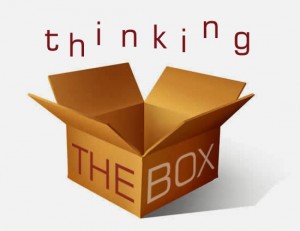
Courtesy of Applicant
We all know that the world is changing at a blinding pace. Yesteryear’s market leaders like Barnes & Noble, Kodak, Blockbuster and Tower Records fade away. Meanwhile, new business darlings like Amazon, Apple, Netflix and Google take the stage.
Time and again, we’ve been told that if we don’t think “out-of-the-box” and reinvent our businesses, we will suffer the same untimely fate. The challenge, however, is how.
In a podcast episode on Mitch Joel’s Six Pixels of Separation, Alan Iny of Boston Consulting Group (BCG) shared some of the ideas from his book Thinking in New Boxes. Partnering Luc de Brabandere, Iny mooted that we all rely on assumptions and mental models.
Called “boxes” by the BCG consultants, these frameworks may blind us to risks and opportunities.
To overcome this, Iny proposes that we can catalyse business creativity through five steps:
1) Doubt everything. Challenge your current perspectives.
2) Probe the possible. Explore options around you.
3) Diverge. Generate many new and exciting ideas, even if they seem absurd.
4) Converge. Evaluate and select the ideas that will drive breakthrough results.
5) Reevaluate. Relentlessly. No idea is a good idea forever. And did we mention Reevaluate? Relentlessly.
While the above sounds simple, the hard part is in ensuring that brainstorming and ideation exercises occur within the right constraints. Unbridled creativity without a sense of reality (eg budgets, manpower, technological capability) will lead to airy fairy ideas that cannot be implemented. Similarly, failure and risks should be celebrated but not to the extent of betting the firm.
I loved the success stories shared by Iny and Joel during the podcast. They include Bic from France, Tsiferblat (Clockface cafe) in Moscow, and Ace Hotel.
Starting out as a cheap disposable pen manufacturer, Bic shifted its business strategy to one which now makes lightweight disposable plastic consumer goods like pens, lighters and shavers. This helped the company to thrive amidst stiff foreign competition from Chinese manufacturers of consumer goods.
Rather than simply view itself as a pen company, Bic started to think of itself as a mass producer of inexpensive plastic implements, hence creating a new box.
Tsiferblat cafe in Russia doesn’t charge for drinks or food, unlike cafes around the world. Instead, patrons are charged based on the amount of time they spend there. The price is two rubles a minute for the first hour (approx S$5 an hour) and then one ruble per minute for the time beyond that up to a maximum of five hours. During that time, you can drink as many lattes or eat as many cakes as you wish.
By charging for time instead of food and drinks, the cafe’s business model is more similar to that of hotels than other F&B establishments.
Talking about hotels, Ace Hotel across the US offers its hotel lobbies as places for people to work, chill out and study. Touted as the “anti boutique hotel” concept, the hotel chain turns old world buildings into charming hang outs complete with antique furniture, shelves of books, and installation art.
Fashioned as chic bohemian places, these places lure folks who will order food or drinks from the hotel. Its lobbies are no longer waiting areas but are transformed into profitable hang out zones.
In Singapore, new business models are relatively few and far between. Just visit any neighbourhood shopping mall and count the number of chain stores, restaurants and beauty salons. While we do see novel businesses like artisanal cafes, indie fashion boutiques, and hand-crafted foods and drinks emerging, these establishments are the exceptions rather than the norm.
The next time you wish to roll out another “copycat” product, service or business, consider changing your mental model. Re-examine your boxes and find a new way to present your offering as a gift to your customers. Who knows, you may become the next Amazon.
For more, check out BCG’s article on Thinking in New Boxes, as well as its book of the same title.
